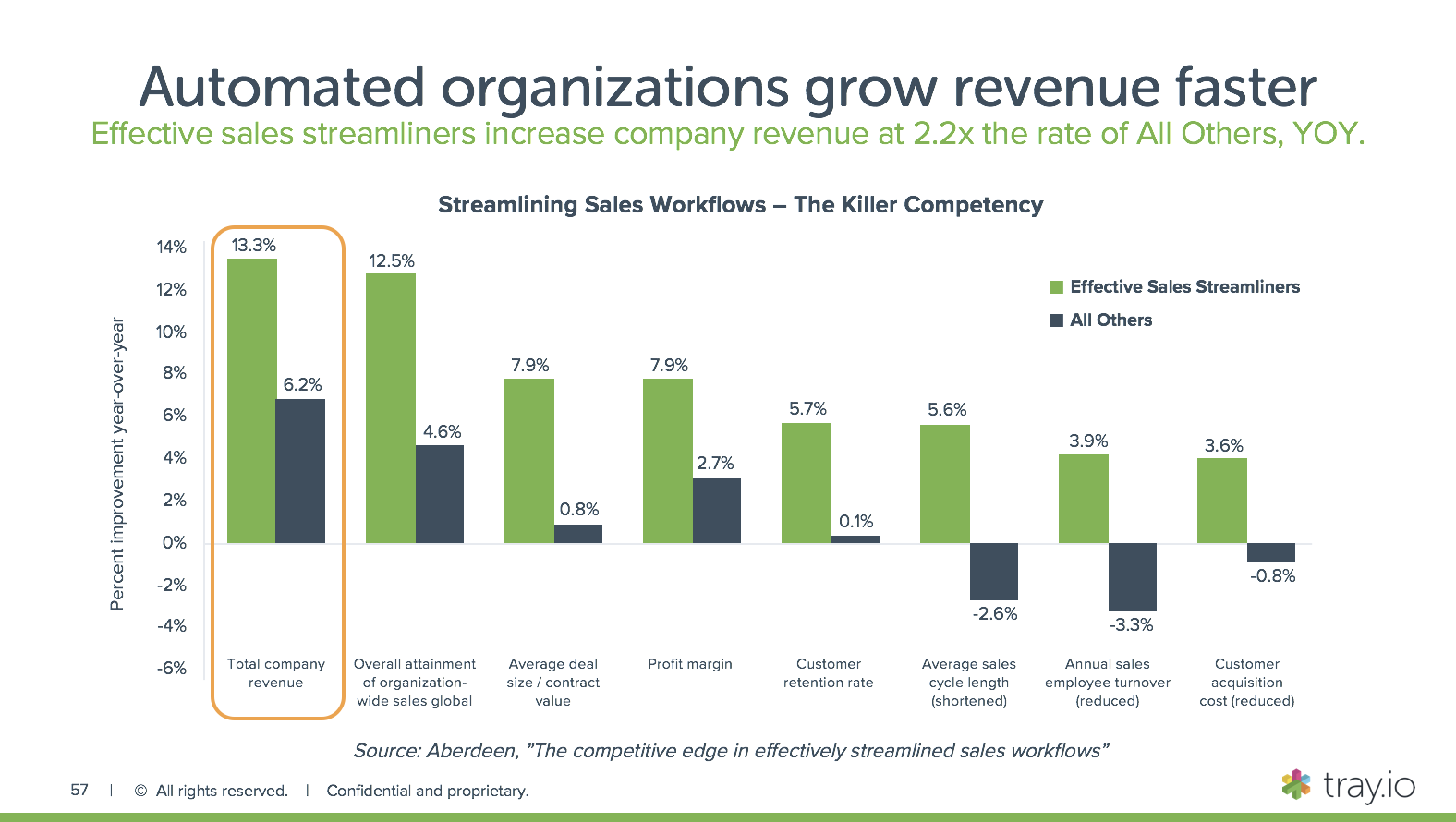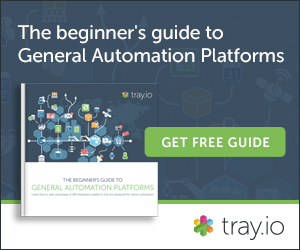How to make a business case for a General Automation Platform for integration + automation

[Note: This article was adapted from The Beginner’s Guide to General Automation Platforms. Get the full report here.]
What’s a General Automation Platform?
A General Automation Platform (GAP) has three powerful features. It can integrate all components of your tech stack, it can create powerful automated workflows incorporating multiple apps, and it offers a user-friendly, clicks-not-code interface designed for all business users...not just engineers.
A GAP can handle a variety of tech stack configurations. It can fix operational and technical breakages between CRM, marketing automation, and task management internally while maintaining consistent messaging in sales and support chats externally. (It can also do double-duty as a gatekeeper for sensitive financial documents, mitigate security and compliance risks, and even automate a variety of HR functions.)
Sound good so far? But maybe it’s also starting to sound like one of those nice things we can’t have around here.
Don’t worry. There’s a very solid argument for acquiring a GAP for your company. It even starts with a bar chart:

Research analyst firm Aberdeen Group reports: Companies that incorporate automation grow revenue more than twice as fast as those that don’t. Here’s how:
- Improved productivity - Significant time savings by automating manual processes.
- Process agility - Rapid iteration on processes by centralizing integrations.
- Increasing ROI over time - Going from a single point integration to multi-app, multi-step workflows.
- Savings in software costs - Relying less on multiple software user licenses and ultimately on fewer single-purpose applications.
OK, so we have a sense of the value GAPs can provide. Now, let’s get started on our business case.
Step 1: Create a cost-benefit analysis
Benefit estimates
Let’s start with some simple steps to calculate a cost-benefit analysis:
- Measure: Baseline metrics and time required for processes you plan to automate.
- Calculate: Cost of resources currently tied up in manual processes.
- Document: Any processes that simply can’t be accomplished without automation.
- Factor in: Any cost savings due to reducing your budget on additional software tools.
Drop the results into a spreadsheet and track the “before” and “after” side-by-side.
Cost estimates:
To estimate the cost of a GAP, keep in mind that the pricing model depends on:
- Product
- Support/Training:
- Configuration:
Add these costs to your spreadsheet to create a holistic cost-benefit analysis.
Step 2: Build consensus (a.k.a. getting buy-in)
Before your company pulls the trigger, you need budget and contract approval. That means convincing executives and other stakeholders to get on board. Be ready to discuss:
- Credibility - Do you have responsibility for process improvement, or budget/contract authority? If not, who does?
- Management’s objectives - Is management focusing on top-line revenue growth or bottom-line cost cutting? Align your cost-benefit analysis to the right goals.
- Proof points - Can you share case studies, analyst research, and how they justify your own cost-benefit analysis?
- Roll-out plan - Do you have a project timeline with milestones and necessary resources? Can you show future savings and better results compared to now?
- Anticipating objections - Do you understand your stakeholders’ interests and priorities? What does a successful project look like for them?
Step 3: Objection handling
You’re getting close! But you may also encounter these common objections from stakeholders in your company. Here are some specific responses you can use:
They say:
“We have to implement This Other Application before starting this project.”
You say:
“A GAP can actually make the transition to This Other Application easier by integrating it into our existing stack. It can also help move data out of older applications into new ones.”
They say:
“We don’t have the bandwidth to manage another application.”
You say:
“GAPs are easy enough to for business users to manage - they have a drag-and-drop interface with a much gentler learning curve than most enterprise applications. Also, the vendor may offer managed services to configure and admin our instance if we need.”
They say:
“We don’t have the budget for this.”
You say:
“I’ve put together a full cost-benefit analysis to show how a GAP will pay for itself.”
They say:
“Why don’t we try to build this in-house instead of buying it?”
You say:
“Building an in-house solution will take significantly more time and resources than using a ready-built GAP. We’d also have to spend even more to maintain it, since the solutions in our tech stack will also change over time. It’d make more sense to focus our resources on key business goals, such as building up the company’s core products and services.”
Takeaway
Now that we’ve covered the topic in-depth, you should have a strong sense of the value GAPs provide, and a clear gameplan for making a business case for your company.
To help you make your case, request a demo to see what a general automation platform can do for your company.
For more on how General Automation Platforms will grow your business, and more ideas on how to make a business case (including how to convince your CMO, CTO, CIO, and CEO), see The Beginner’s Guide to General Automation Platforms.

